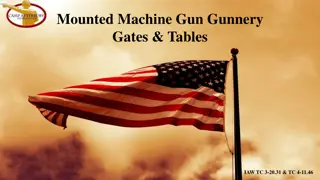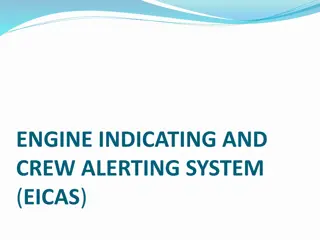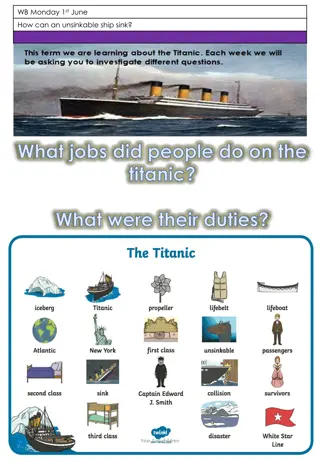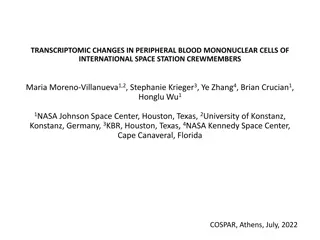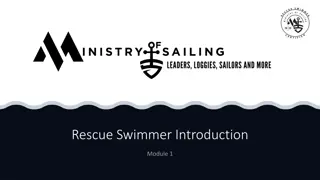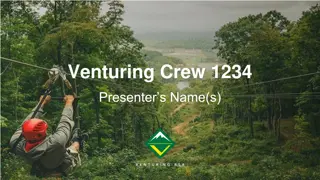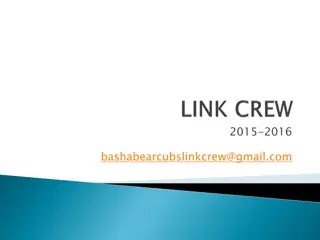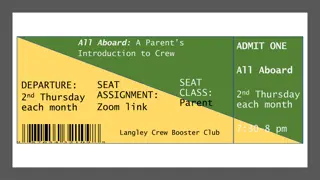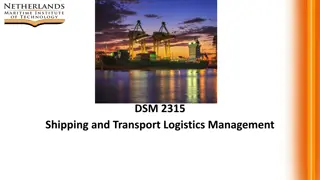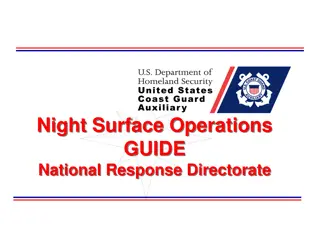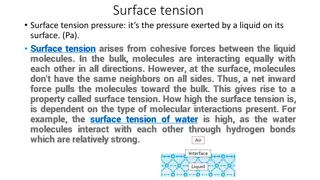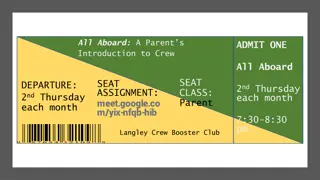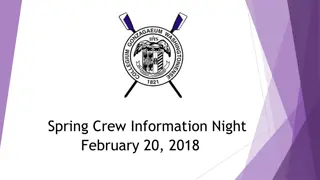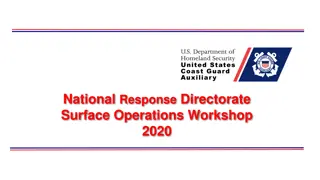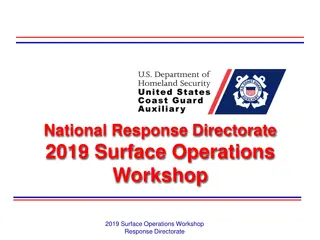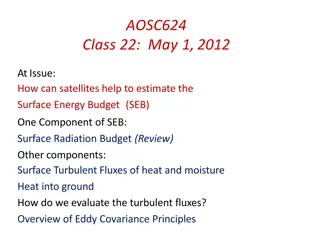Night Surface Operations Safety Guide - Ensuring Crew Members' Safety
This presentation highlights the importance of safety in night surface operations, emphasizing the primary mission goal of ensuring all crew members return home safely. It discusses the culture of safety, emphasizing that safety is not just a program but a state of mind, attitude, and commitment. The guide also focuses on establishing a culture of safety through shared values and attitudes, education on human error prevention, and the Surface Safety Program that analyzes mishap data to improve safety practices.
Uploaded on Sep 17, 2024 | 0 Views
Download Presentation

Please find below an Image/Link to download the presentation.
The content on the website is provided AS IS for your information and personal use only. It may not be sold, licensed, or shared on other websites without obtaining consent from the author. Download presentation by click this link. If you encounter any issues during the download, it is possible that the publisher has removed the file from their server.
E N D
Presentation Transcript
2017 National Conference Response Directorate Presentation Jim McCarty DVC Surface Operations
Night Surface Operations Safety GUIDE National Response Directorate
Mission Goal ? Surface Operations What is our Primary Mission? Night Surface Operations Guide
Safety- Primary Mission Goal Our Primary Goal is to ensure that all crew members return home safely . Night Surface Operations Guide
Culture of Safety Safety is not a program .it is a state of mind an attitude a commitment. Safety Programs do provide an organizational framework to create and support a culture of safety . Night Surface Operations Guide
Culture of Safety How do we establish that culture, a state of mind- that pattern of safe behavior? Create the appropriate set of values and conventions Build a set of shared attitudes, values, goals It will take time and commitment. Night Surface Operations Guide
Culture of Safety Accidents/Mishaps are caused, therefore are preventable. Human error is the leading cause of aviation accidents. Education and understanding are the tools to improving human performance. What about that Program ? Night Surface Operations Guide
Surface Safety Program The Surface Safety Program consists of : Collection of raw, aggregate surface mishap information. (no personal identifiers) Analysis of raw data elements to determine patterns and trends. Development and dissemination of analytical reports based on that analysis to COLM & fleet. Develop Safety Best Practices guides based on analysis & input from DSOs for the fleet. Night Surface Operations Guide
Safety Guide Portfolio This presentation is one in a series of 35- 45 minute safety Best Practices training guides developed by the Surface Division. Night Operations Safety Guide RADAR Familiarization Guide HELO Surface Operations Guide Surface navigation Safety Guide (See Response web site Safety best Practices ) Night Surface Operations Guide
Disclaimer This guide is not a substitute for applicable policy. The best practices presented in this guide should augment and support the safe completion of our surface operations responsibilities. Applicable instructions and/or local regulations from your OIA and chain of leadership must always be followed. Night Surface Operations Guide
Night Operations Why do we need night ops training? I ve driven boats all my life I operate at night all the time I ve never had an accident No one has had an accident ..until they do. Night Surface Operations Guide
Night Operations Night Operations , for the purposes of this presentation, is defined as any surface mission aboard an AUXFAC that occurs between dusk and dawn, or in conditions of limited visibility requiring the use of navigation lights (fog, rain, less than mile visibility and/or other factors). See Inland and International Rule # 19 (Navigation Rules) for details. Night Surface Operations Guide
Fatal Accident December 20, 2009, 1744 hours (Dark) San Diego Holiday Boat Parade CG 33118 moving at 42 kts (NTSB report) They were responding to a non-distress sailboat aground CG 33118 struck a 24 foot Sea Ray An 8 year old boy was killed Night Surface Operations Guide
Night Operations of the world is always in darkness While we train in the light, the SAR call may come at night Some ATON patrols must be done at night BCM-08-02-AUX requires a night underway navigation and piloting exercise NOTE: May be waived by the Director in accordance with Section 1.B.4. If waived, candidate must discuss night navigation and piloting. Same for COX-09-04-AUX Night Surface Operations Guide
NIGHT OPERATIONS Holiday boat parades are conducted after dark Hard to distinguish Navigation Lights from holiday lights Fireworks Safety Patrols are very dangerous Everyone is looking up, not out Things (some hot things) are falling from the sky Night Surface Operations Guide
General Rules Conduct a thorough mission briefing Discuss specific mission goals Discuss how reduced visibility will affect navigation & avoiding hazards that may be encountered. Adapt to night vision and conserve it No white lights Extra caution moving on weather decks Keep one eye closed if white light must be used Change interior lights to red or blue Use caution reading charts in red or blue light colors on the chart look very different Night Surface Operations Guide
General Rules Slow down, remember NAV RULE 6 Every vessel shall at all times proceed at a safe speed so that she can take proper and effective action to avoid a collision and be stopped within a distance appropriate to the prevailing circumstances and conditions . To determine that safe speed, the Nav Rules list these factors: Visibility, traffic density, maneuverability of the vessel (stop, turn distances), background light & scatter that may impact vision, draft & water depth, sea state & weather. Night Surface Operations Guide
Night Operations If ever in doubt of the vessels position STOP! STOP! Night Surface Operations Guide
Night Operations Regain your situational awareness by: Bringing the vessel to a full stop. Deploying the anchor if necessary. Do not continue patrol until your exact position and circumstances have been determined. Night Surface Operations Guide
Night Operations How current are your electronic charts? How current are your paper charts? Currently corrected paper charts are always the best, the Gold Standard . Electronic charts are known to have errors. Trust but verify. Night Surface Operations Guide
Night Operations USS Guardian (MCM-5) On January 2013, the USS Guardian ran hard aground on a Philippine Coral Reef. They were using electronic charts that showed the reef 7 miles away. Their paper charts showed the reef correctly. The ship was a total loss and was cut up in place. Night Surface Operations Guide
Night Operations Use your hearing Sound carries very well over the water Maintain a proper watch and extra lookouts. Consider attaching Chem-Lights to tow lines so you can actually see the line and stand a proper tow watch. Night Surface Operations Guide
Night Operations Alertness levels may drop off at night. More frequent helm and lookout changes may be required to maintain an alert crew. The most difficult period to maintain alertness and awareness is between 2100-0700 hours. Night Surface Operations Guide
Night Vision You should have 20/20 (or corrected to 20/20) to see obstacles, navigation lights and aids to navigation. It takes healthy people up to 60 minutes in darkness to adapt to night vision. Night Surface Operations Guide
Night Vision Individuals who smoke and/or drink have decreased visual acuity. Alcohol has the following effects Blurred or double vision Slow pupil reaction Decreased peripheral vision Altered contrast sensitivity Night Surface Operations Guide
Night Vision In light dimmer than moonlight a person has to depend upon the rods in the eye to see. The center of your vision will be a blind spot. Night Surface Operations Guide
Night Vision Night Surface Operations Guide
Night Operations Equipment The OIA will decide what limitations will be placed on night & limited visibility operations & what equip is necessary. GPS-RADAR As a general rule, any facility that might operate at night or in conditions of limited visibility should be equipped with GPS and RADAR, and the operator must be able to competently use that equipment safely. Night Surface Operations Guide
Night Operations Equipment NAVRULE 7 states; Proper use shall be made of radar equipment if fitted and operational . If you have it you must use it (all hours, not just at night) and be competent in it s use. Make sure your watch standers know how to read the screen. Night Surface Operations Guide
Night Operations Equipment Tow Lights The tow light configuration described in Rule 24 of the Navigation Rules regarding night towing operations is a good idea but is not required for AUXFACS. (i) Where from any sufficient cause it is impracticable for a vessel not normally engaged in towing operations to display the lights prescribed in paragraph (a) or (c) of this Rule, such vessel shall not be required to exhibit those lights when engaged in towing another vessel in distress or otherwise in need of assistance. All possible measures shall be taken to indicate the nature of the relationship between the towing vessel and the vessel being towed as authorized by Rule 36, in particular by illuminating the towline. Night Surface Operations Guide
Night Operations The Coxswain should assign one crew member to constantly monitor the Radar screen in addition to the helmsman. This crew person must be competent with Radar, keep a watchful eye on the screen and communicate conditions clearly with the Coxswain and helmsman. Speeds should be limited to no more than 10 knots. Night Surface Operations Guide
Summary The 7 elements of TCT are especially important during night operations. Be guided by and communicate with your OIA and appointed officers when night operations are planned. Ensure you have a fit crew, with extra members, and a skilled GPS and RADAR operator on board. Maintain situational awareness and be adaptable to changing conditions. Night Surface Operations Guide
Thank You Special Thanks to David Larkin BC-Special Projects, National Response Directorate. And to youfor attending Night Surface Operations Guide
References COMDTPUB 16754.27, 2013. Recreational Boating Statistics. Code of Federal Regulations. 46 CFR 10.305(a), Vision Requirements, Deck Standard. Bedinhaus, T. DO, June 3, 2014. USAF Special Report, AL-SR-1992-0002, Night Vision Manual for the Flight Surgeon, written by Robert E. Miller II, Col, USAF, (RET) and Thomas J. Tredici, Col, USAF, (RET). USCG, November 18, 2014. Navigation Rules and Regulations Handbook. COMDTINST 16772.2D, July 1, 2013. Navigation Rules: International-Inland (superseded). National Transportation Safety Board, July 12, 2011. Collision Between U.S. Coast Guard Vessel CG 33118 and Sea Ray Recreational Vessel CF 2607 PZ, San Diego Bay, California, December 20,2009. DFSO C-School AUX-14 Night Surface Operations Guide


